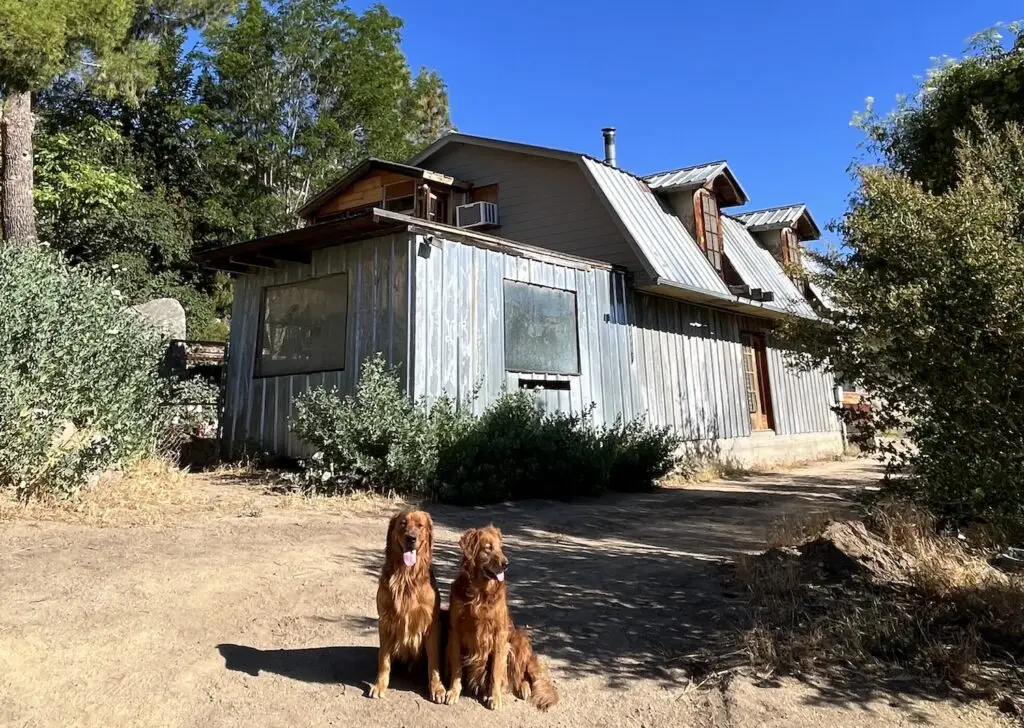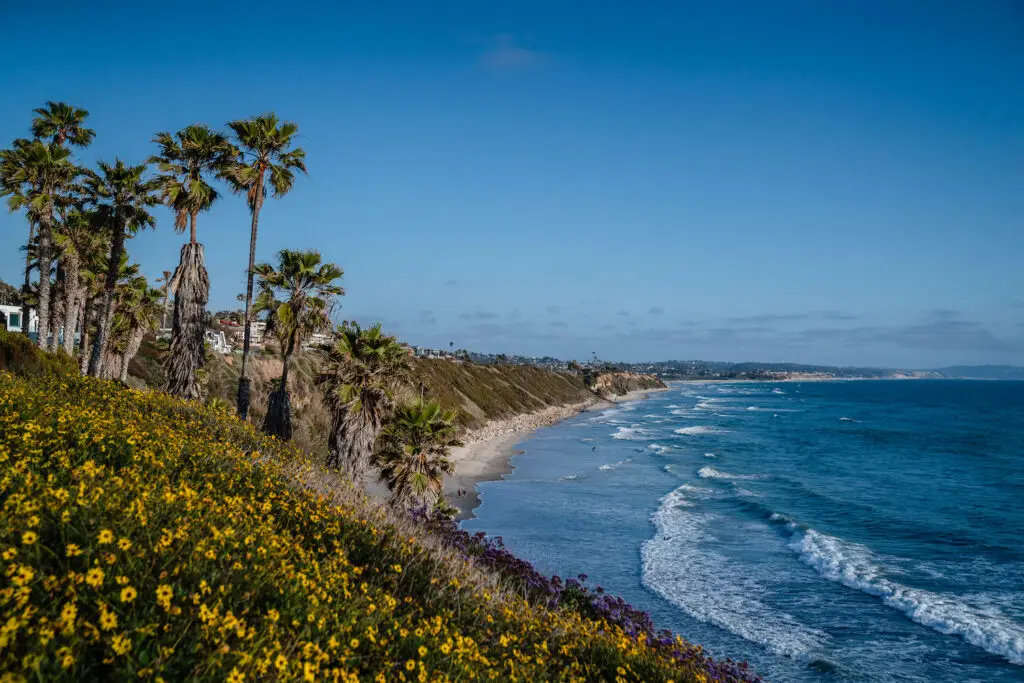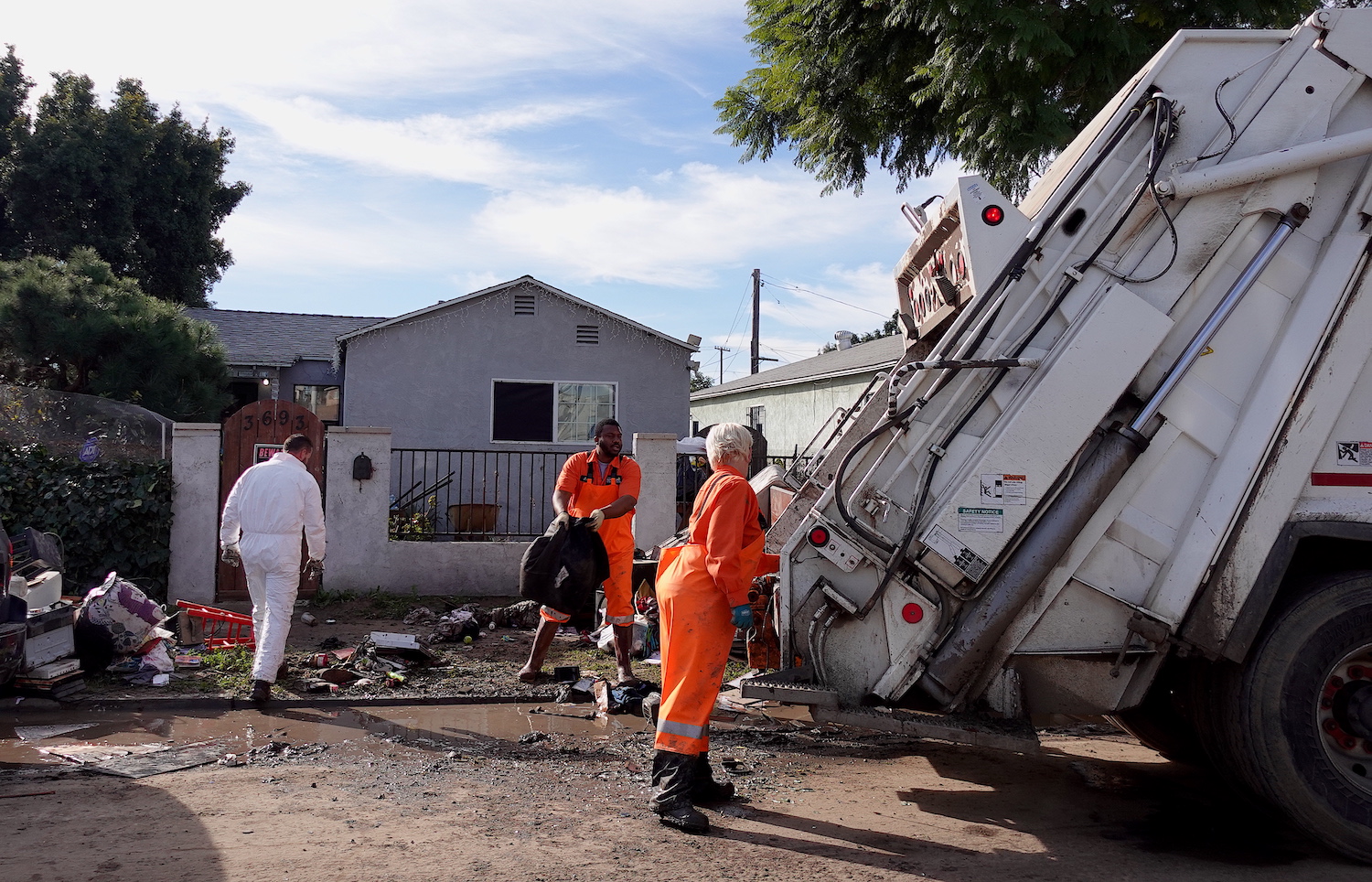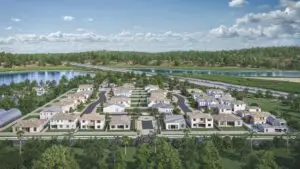It’s difficult to walk down Beta Street in San Diego’s Southcrest neighborhood, the area that received the brunt of the flooding caused by Monday’s winter storm. The ground is slick with mud and I have to watch where I step; the street has become a disaster zone.
Every single house I pass has water-damaged belongings outside. Totalled vehicles filled with mud and debris line the road on both sides.
“[We lost] everything in our bedrooms, kitchen, bathroom. TVs, computers, clothes. Everything. The only thing we have left is the urge to keep going,” says Óscar Pacheco, a resident who has lived on this street for 24 years.
Pacheco shows me the shoulder-height watermark on the outside of his house and leads me inside, where the only thing left untouched is a TV in his bedroom. “That one was attached to the wall, high up,” he says.
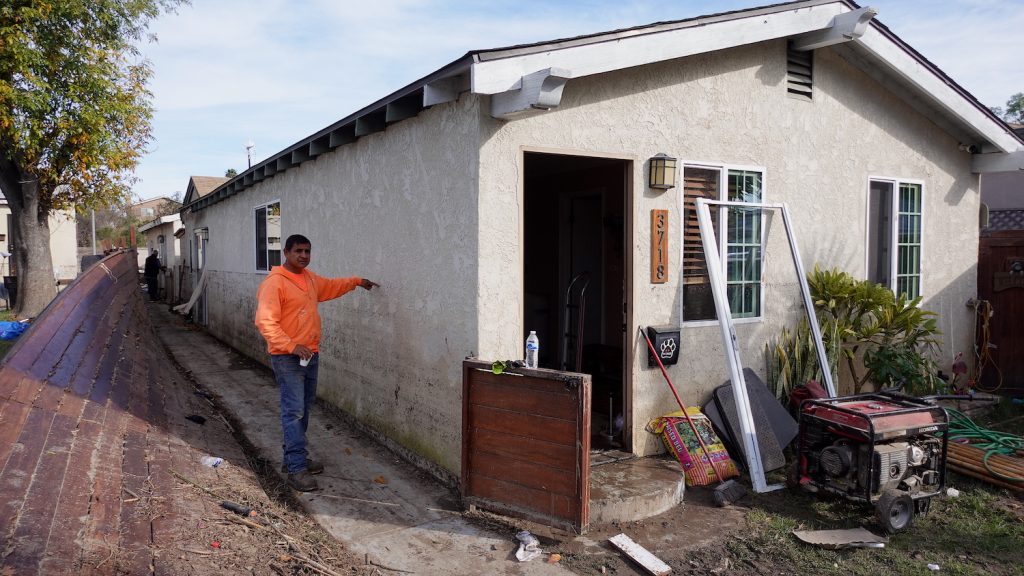
Beta Street lays parallel to the South Las Chollas creek, the emptying channel for a 16,000-acre watershed. “This is a large watershed. Every drainage system in this area was overwhelmed,” City of San Diego Deputy Chief Operating Officer Kris Mcfadden said during a press conference on Thursday.
Mcfadden insisted that the City of San Diego performs regular maintenance on the creek and that the channel near Southcrest was drained earlier this year, but Pacheco thinks the storm prep work was not enough. “They come and clean it when we demand it, and then two or three years later they come again. I think it should be continuous,” he says.
Delays in City Infrastructure Projects Lead to Mass Damage
In Mcfadden’s opinion, the problem lies in the foundation. “You could maintain the system all day. [But] if you get another storm like that, it would happen again,” he says, adding that five capital improvement projects to upgrade the city’s stormwater infrastructure are on their way.
One of them, the Southcrest Green Infrastructure, a project to capture runoff, is supposed to break ground in three months, Mcfadden says. But the $5 million project—located on National Avenue, less than a mile away from Beta Street—has been in the works since before 2016.
“Green infrastructure is a big, open space specifically designed to funnel […] overflowed water into this area that acts as a catch basin,” says Mae Stevens, CEO of American Business Water Coalition. “The water will go into this system instead of into your home or into a business.”
“[The Southcrest Green infrastructure project] is going to improve the storm drains in the area, and it’s going to slow some of these storms,” Mcfadden adds.
I showed Pacheco the project details. He hadn’t known about them previously. “Maybe we would have flooded,” he says. “But not as much.”
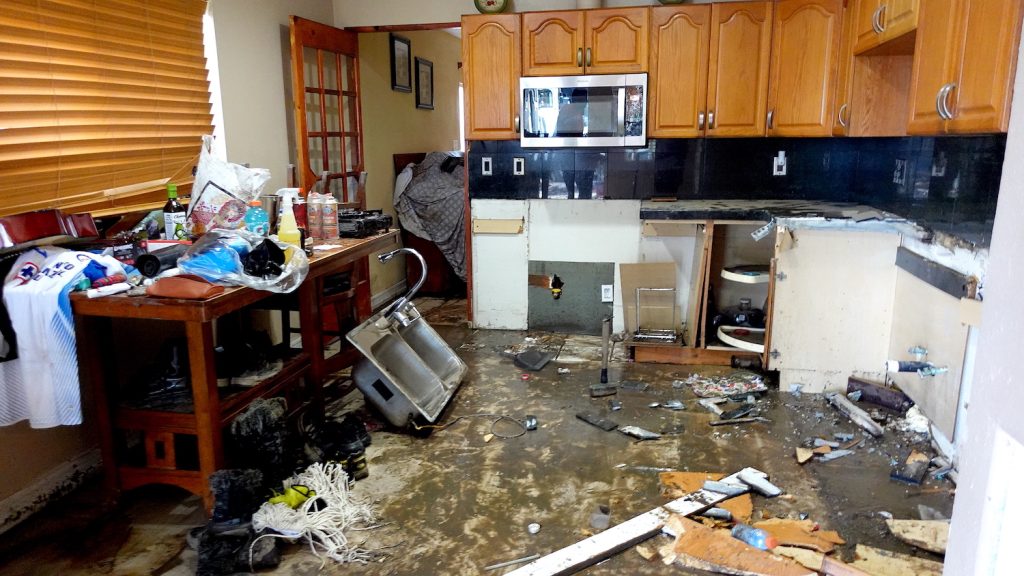
“It’s much more expensive to deal with [flood damage] after the fact. All the photo albums, the memories—and that doesn’t even include if people die,” Stevens says. “We better invest in water infrastructure now.”
When I asked the City of San Diego why the Southcrest Green Infrastructure project has taken this long to get going, Director of Communications Rachel Laing cited “regulatory and funding” as the main reasons. This project is just a drop in the bucket of a $1.6 billion deficit in citywide stormwater infrastructure.
According to Stevens, it’s really difficult for cities like San Diego to fund water infrastructure projects. “The reason is that they are very expensive, and the federal government is not spending enough money,” she says.
Most stormwater infrastructure projects are funded by communities through their water bills. Therefore, low-income communities who can’t afford high water rates—such as Southcrest—“[are] going to have a lot of funding needs for the water system and they are not going to be able to afford them,” Stevens explains.
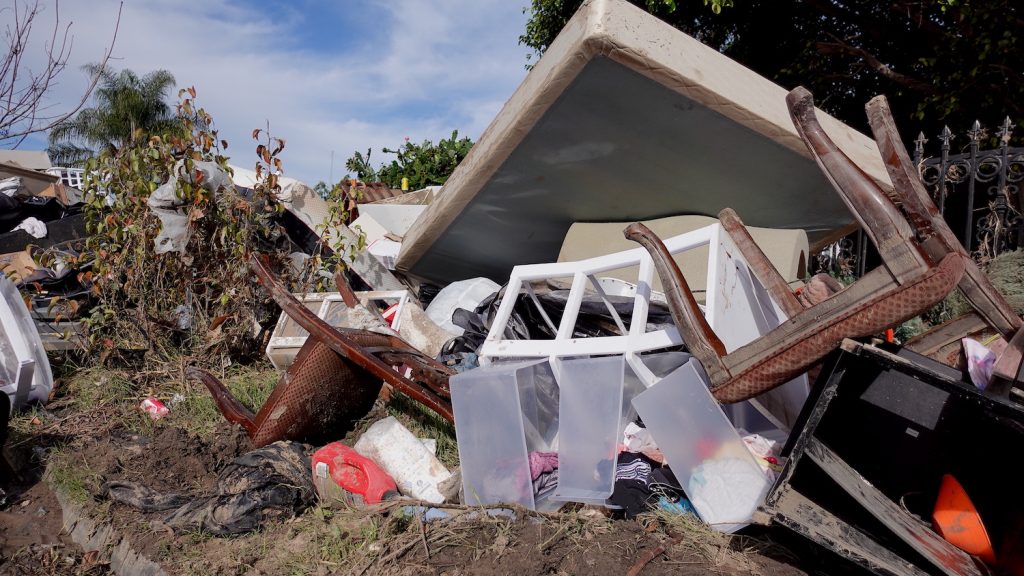
Back in Southcrest, city employees of various departments and independent contractors worked to haul out mud, debris, people’s ruined belongings, and water-logged furniture on Beta Street on Friday. Others focused on retrieving vegetation and debris from Las Chollas Creek, where all manner of objects—from plastic cups to cars—lined the creekbed.
All this work is going to be paid through emergency funds the city was able to secure after the flood. “We are managing a system that was designed 50 years ago for a climate that was much different then,” Mcfadden says.
Atmospheric River Causes Mass Floodings
The storm that hit San Diego on Monday, causing the devastation, was an atmospheric river—a fast-moving river in the sky made of water vapor.
“Atmospheric rivers already produce 30 to 50 percent of our annual precipitation, [and] they are going to produce even more,” says Marty Ralph, UC San Diego’s Scripps Institution of Oceanography research meteorologist and founding director of Scripps’ Center for Western Weather and Water Extremes.
Forecasting atmospheric rivers accurately is challenging for meteorologists. With the current resources, such as data satellites, it’s difficult to determine where they will make landfall or how strong they will be without measuring patterns of water vapor, temperature, or, in this case, temperature of the ocean.
Ralph says he recognized something about Monday’s storm in San Diego and went to an online resource to check the temperature of the water, which was 3 to 4 degrees Celsius above average near the coast. He explains that a warmer pool of water made the amount of rainfall increase sharply.
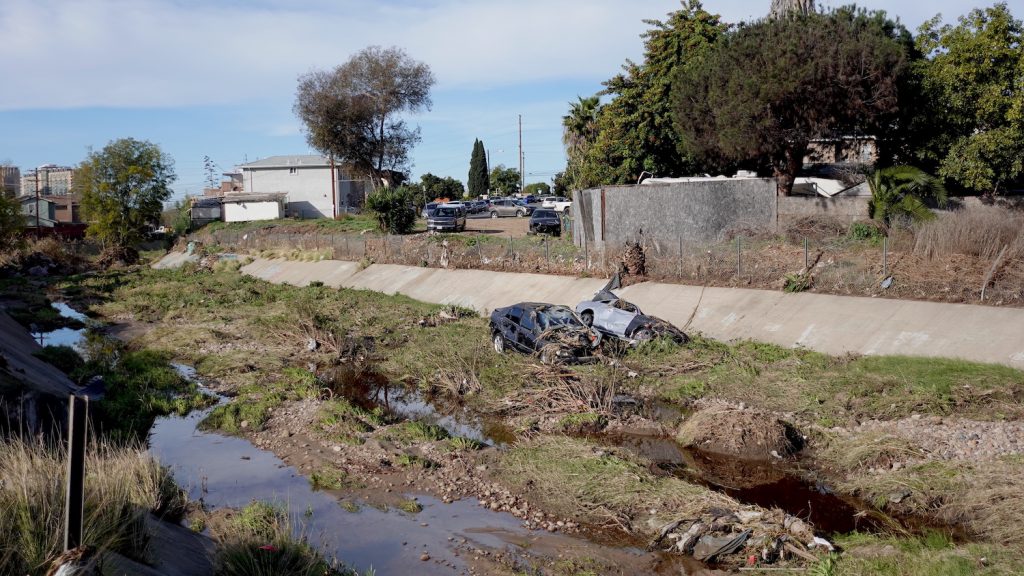
“These things are all influencing the weather in different ways, coastal warm water supercharging an event that was already going to produce a decent amount of rain producing an exceptional amount of rain,” he says.
Ralph works with the National Oceanic and Atmospheric Administration, the Army Corps of Engineers, and the Air Force to fly planes over atmospheric rivers near Hawaii to measure them and help meteorologists everywhere be able to more accurately represent this phenomenon in their predictions. “Just yesterday, we flew two of those aircrafts,” he adds.
For Pacheco, the weather alert system is part of the problem.
“Every time it rains, even a little bit, we get an alarm,” he says, referring to the flash flood warning that the National Weather Service sends to our cell phones. “Sometimes the floor doesn’t even get wet and we get an alarm, so I ignored it.”
PARTNER CONTENT
So a better way to predict rainfall, and alert residents only when necessary, might help people in neighborhoods at risk of flooding be ready for major weather events.
“We have to expect this type of storm intensity on a regular basis, and we have to prepare for it and we have to prepare our residents for it,” Mcfadden says.

